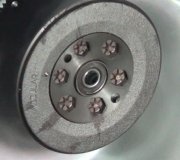The way you worded your original post, it sounded like this problem started before you did the transmission service, and the new filter and fluid was an attempt to solve the problem. If this shifting problem actually only started after the service was performed, the transmission should have been slipping too. That would set fault codes related to "incorrect gear ratio" for one of more of the clutch packs. If that is what you find, those should be erased and disregarded.
This is from the service manual:
CAPACITY, Initial Refill [1]:
42RE, 44RE, 46RE. 9.1-9.5 L (19-20 pts.)
REMARKS:
[1] Dry fill capacity. These figures may vary depending on size and type of internal cooler, length, and inside diameter of cooler lines, or use of an auxiliary cooler. Check fluid level on dipstick according to applicable procedures.
Ten quarts would be what is needed to fill a newly-rebuilt transmission that is totally empty. When you do a filter and fluid change, only about half of the old fluid drains out. Four quarts to refill it would a good starting point. That's plenty to replenish the additives. After that, follow the directions on the dip stick. Typically it will say to run the engine until it is warm, shift through all the gears, from "1" to "park", wipe off the dip stick, then use it to measure the fluid level. There will be a range indicted that is acceptable. Add a little more new fluid if necessary.
Be sure to use the correct transmission fluid. Years ago there were just two kinds; one for Ford products, and one for everything else. That is no longer the case. Yours calls for:
MOPAR ATF+4, Type 9602
It contains special additives to allow the torque converter's lock-up clutch to engage gradually at lower speeds. That is done for comfort by eliminating the harsh jolt when it engages. With the wrong transmission fluid, you will observe a rather severe shudder when partial lock-up occurs between around 30 - 40 mph.
Monday, September 7th, 2020 AT 2:43 PM



